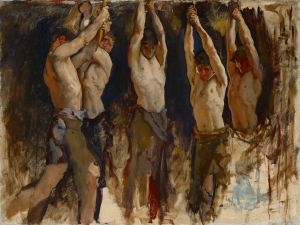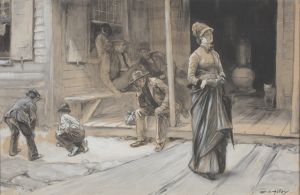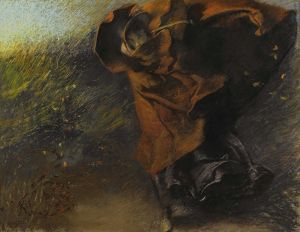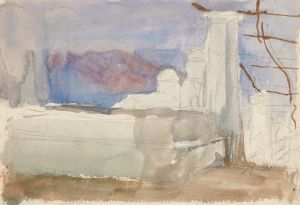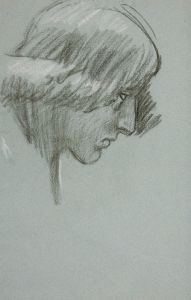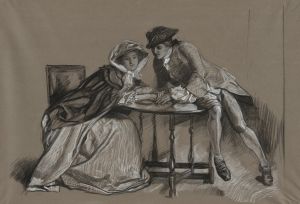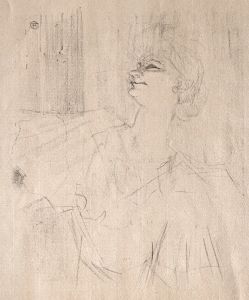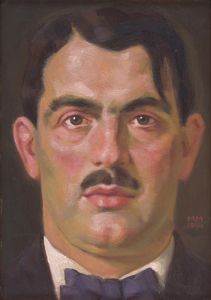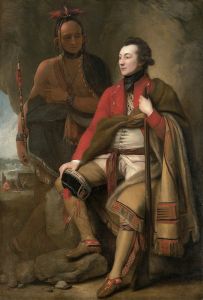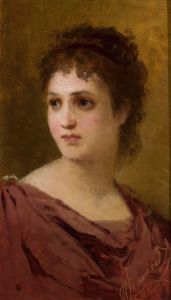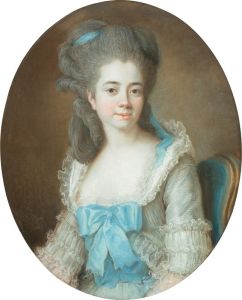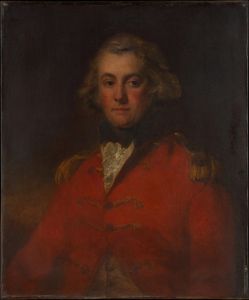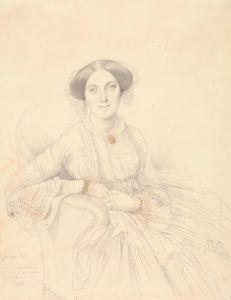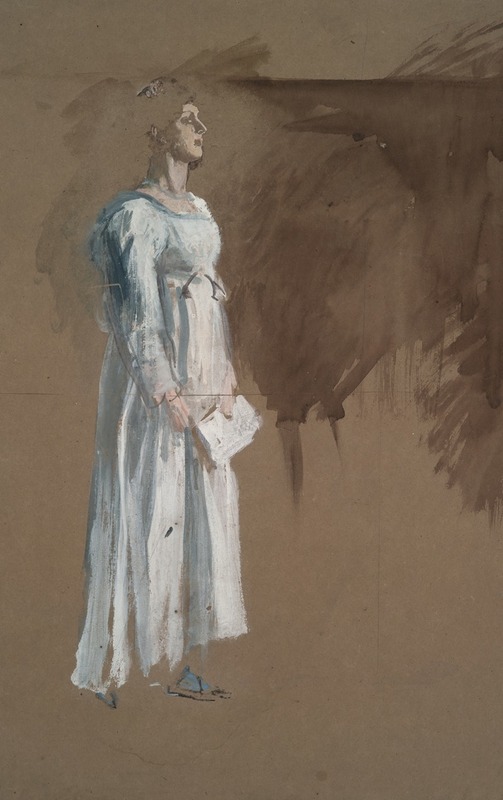
A figure in classical dress
A hand-painted replica of Edwin Austin Abbey’s masterpiece A figure in classical dress, meticulously crafted by professional artists to capture the true essence of the original. Each piece is created with museum-quality canvas and rare mineral pigments, carefully painted by experienced artists with delicate brushstrokes and rich, layered colors to perfectly recreate the texture of the original artwork. Unlike machine-printed reproductions, this hand-painted version brings the painting to life, infused with the artist’s emotions and skill in every stroke. Whether for personal collection or home decoration, it instantly elevates the artistic atmosphere of any space.
Edwin Austin Abbey was an American artist known for his illustrations and paintings, particularly those depicting scenes from Shakespearean plays and other literary works. One of his notable works is "A Figure in Classical Dress," which exemplifies his skill in capturing historical and literary themes with a high degree of accuracy and artistic finesse.
Edwin Austin Abbey was born on April 1, 1852, in Philadelphia, Pennsylvania. He began his career as an illustrator, contributing to magazines such as Harper's Weekly. Abbey's work was characterized by its attention to detail and historical accuracy, which made him a popular choice for illustrating classic literature. His interest in historical and literary subjects is evident in many of his works, including "A Figure in Classical Dress."
"A Figure in Classical Dress" is a painting that showcases Abbey's fascination with historical themes and his ability to render them with precision and elegance. The painting depicts a solitary figure dressed in classical attire, which is indicative of Abbey's interest in the classical world and its influence on art and culture. The figure is portrayed with a sense of grace and poise, reflecting Abbey's skill in capturing the human form and his attention to the details of costume and setting.
The painting is notable for its use of color and light, which Abbey employed to create a sense of depth and realism. The classical dress is rendered with meticulous detail, highlighting Abbey's expertise in depicting fabric and texture. The background of the painting is subdued, allowing the figure to stand out and draw the viewer's attention. This focus on the figure is a hallmark of Abbey's work, as he often centered his compositions around a single, compelling subject.
Abbey's interest in classical themes was part of a broader trend among artists of his time, who looked to the past for inspiration and sought to revive classical ideals in their work. This interest was also reflected in Abbey's involvement with the mural movement in America, where he contributed to several significant projects, including the murals for the Boston Public Library and the Pennsylvania State Capitol.
While "A Figure in Classical Dress" is not as widely known as some of Abbey's other works, it remains an important example of his artistic style and thematic interests. The painting is representative of Abbey's ability to blend historical accuracy with artistic creativity, resulting in works that are both informative and aesthetically pleasing.
Edwin Austin Abbey's contributions to art, particularly his illustrations and paintings of historical and literary subjects, have left a lasting impact. His work continues to be studied and appreciated for its technical skill and its ability to convey the richness of the past. "A Figure in Classical Dress" is a testament to Abbey's talent and his dedication to bringing the classical world to life through his art.





